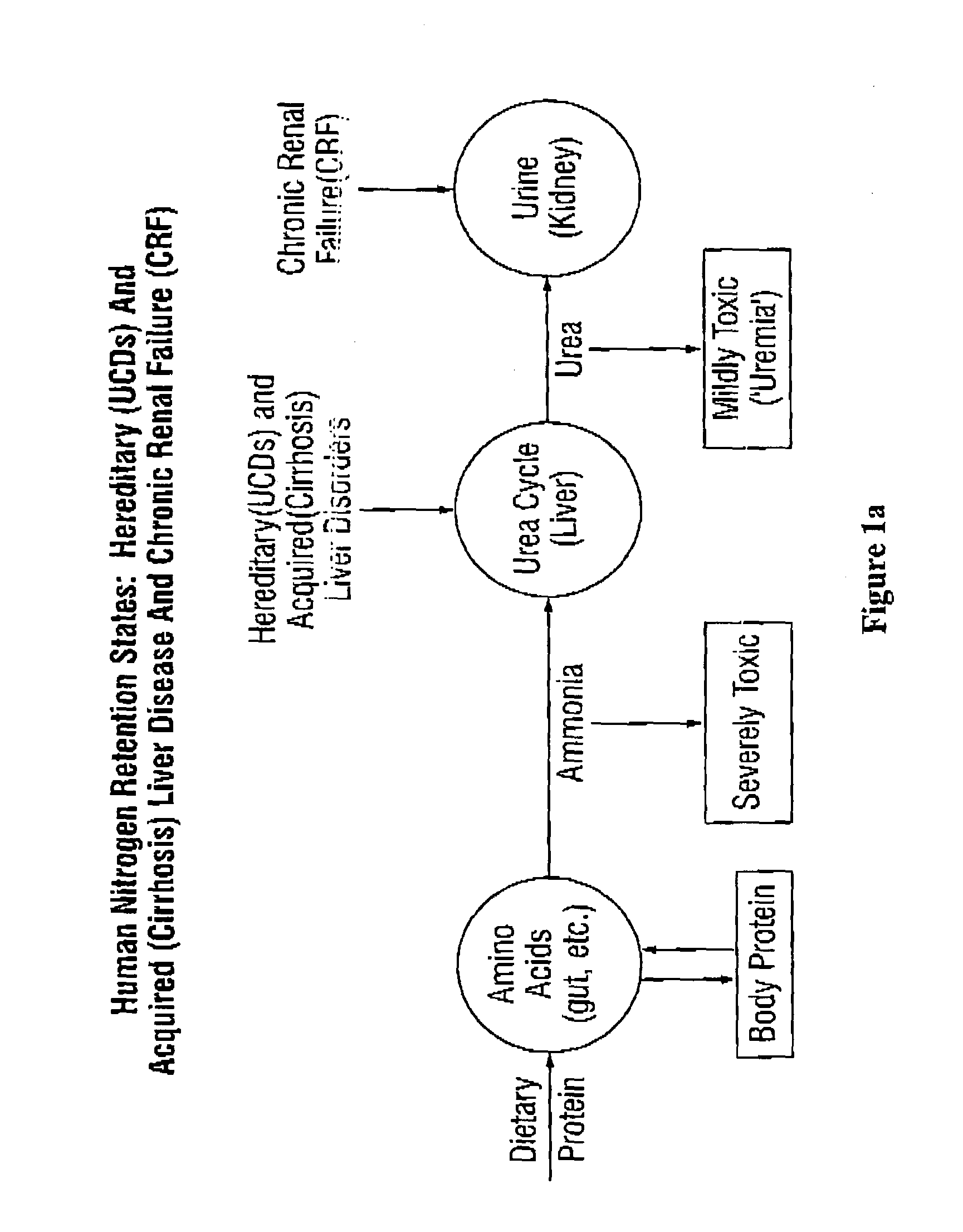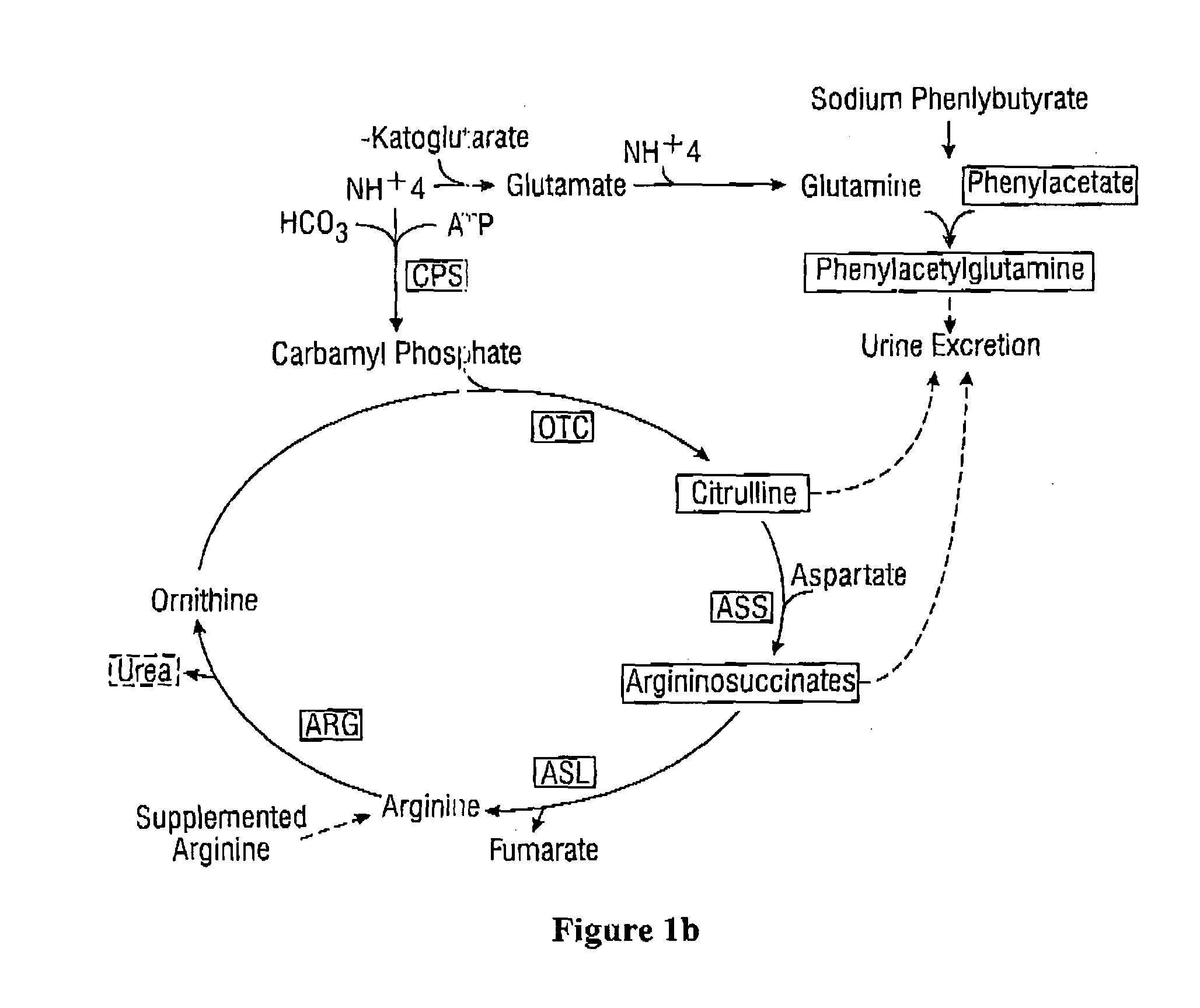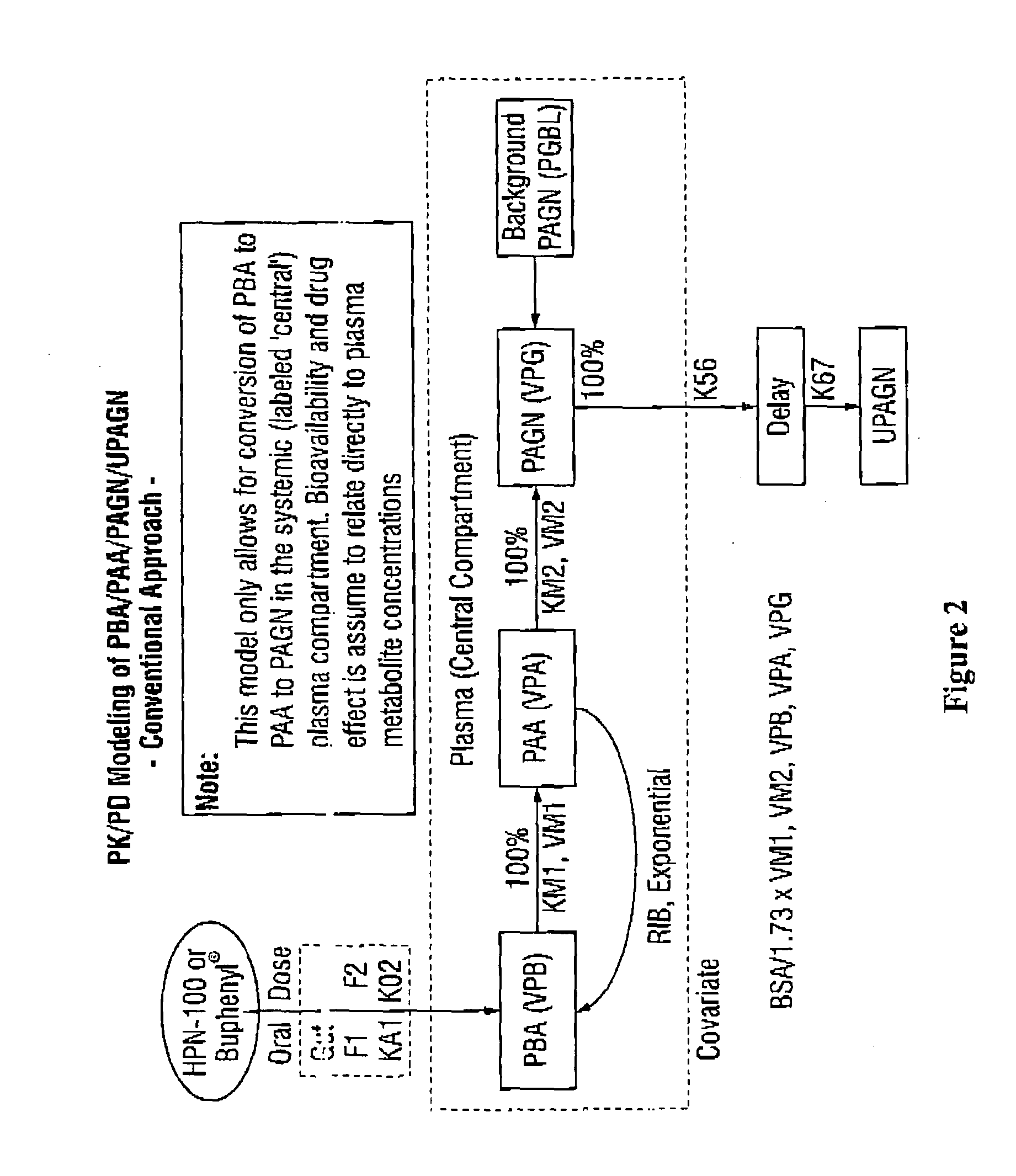Dosing and monitoring patients on nitrogen-scavenging drugs
a technology for nitrogen-scavenging drugs and patients, which is applied in the direction of drug compositions, instruments, and metabolic disorders, can solve the problems of unreliable assessment of treatment effect by measuring ammonia in blood in ucd patients, clinically impractical withdrawal of multiple blood samples over an extended period of time, and excess ammonia in the blood
- Summary
- Abstract
- Description
- Claims
- Application Information
AI Technical Summary
Benefits of technology
Problems solved by technology
Method used
Image
Examples
example 1
Single Dose Safety and PK in Healthy Adults
[0256]To assess its pharmacokinetic (PK) and pharmacodynamic (PD) profile, HPN-100 was administered as a single dose to 24 healthy adults. Pharmacokinetic samples were taken pre-dose and at 15 and 30 minutes post-dose and 1, 1.5, 2, 3, 4, 6, 8, 12, 24, and 48 hours post-dose. As discussed below, plasma levels of the major HPN-100 metabolites PBA, PAA and PAGN were many fold lower after administration of HPN-100 than after sodium PBA. By contrast, urinary excretion of PAGN was similar between the two groups (4905+ / −1414 mg following sodium PBA and 4130+ / −925 mg following HPN-100) and the differences that were observed were determined to be largely an artifact of incomplete collection due to stopping urine collection at 24 hours (note that PAGN excretion following administration of sodium PBA was largely complete at 24 hours but continued beyond 24 hours following administration of HPN-100). Thus, the plasma metabolite concentrations did not ...
example 2
[0260]Administration of HPN-100 to Patients with Liver Disease
[0261]To determine its pharmacokinetic (PK) and pharmacodynamic (PD) profile in patients with liver disease, clinical testing was conducted in which HPN-100 was administered orally as a single dose (100 mg / kg / day on day 1), and twice daily for 7 consecutive days (200 mg / kg / day on days 8 through 14, in two doses of 100 mg / kg per dose), to subjects with hepatic impairment with cirrhosis (Child-Pugh scores of A, B, or C) and to a gender and age-matched control group of healthy adults with normal hepatic function. Steady state levels of these metabolites in blood are reached by this time—see FIGS. 6 and 7. On day 15, subjects received a single dose of HPN-100 (100 mg / kg). PK blood samples were taken pre-dose, at 15 and 30 minutes post-dose, and at 1, 1.5, 2, 3, 4, 6, 8, 12, and 24 hours post-dose on days 1, 8, and 15, and at 48 hours after dosing on days 1 and 15. On days 9-14, blood samples were taken pre-morning dose and at...
example 3
Administration of HPN-100 To Adults With UCDs
[0267]To further explore its pharmacokinetic (PK) and pharmacodynamic (PD) profile in clinical states associated with nitrogen retention, 10 adult UCD patients were switched from sodium PBA to a PBA equimolar dose of HPN-100. Subjects were required to be on a stable dose of sodium PBA before enrolment. Upon enrolment, all subjects received sodium PBA for 7 days and were then admitted to a study unit (Visit 2-1) for overnight observation and 24-hour PK and ammonia measurements and urine collections. Subjects were then converted to the PBA equimolar dose of HPN-100, either in a single step or in multiple steps depending on the total dose of sodium PBA; 9 out of 10 patients converted in a single step. Subjects stayed on the 100% HPN-100 dose for one week and were then re-admitted to the study unit for repeated PK (Visit 11-1), ammonia and urine collections.
[0268]The findings from this study, summarized in detail below, demonstrate that, just...
PUM
| Property | Measurement | Unit |
|---|---|---|
| time | aaaaa | aaaaa |
| time | aaaaa | aaaaa |
| concentration | aaaaa | aaaaa |
Abstract
Description
Claims
Application Information
 Login to View More
Login to View More - R&D
- Intellectual Property
- Life Sciences
- Materials
- Tech Scout
- Unparalleled Data Quality
- Higher Quality Content
- 60% Fewer Hallucinations
Browse by: Latest US Patents, China's latest patents, Technical Efficacy Thesaurus, Application Domain, Technology Topic, Popular Technical Reports.
© 2025 PatSnap. All rights reserved.Legal|Privacy policy|Modern Slavery Act Transparency Statement|Sitemap|About US| Contact US: help@patsnap.com



